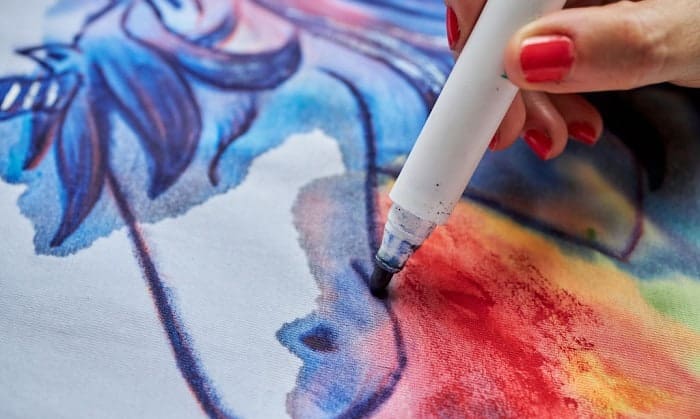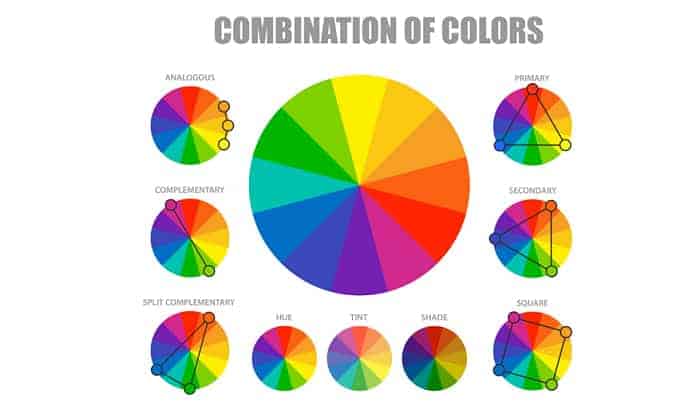Did you know that there are a couple of ways to use a watercolor marker other than just sketching? For that, I’m going to show you how to use watercolor markers so you can go beyond sketching and shading.
Watercolor markers are markers that contain watercolor pigments. You can use them as markers while you can paint with the help of a brush and some water. In some ways, the techniques and supplies needed are similar to traditional watercolor painting.
When traveling, I find them much easier to pack and carry, which is why I love using them for my artworks. Through this tutorial, I hope that it helps you maximize your watercolor marker set.
Table of Contents
What You Need
Watercolor markers
Some watercolor markers can be combined with water, allowing you to blend and apply wet-on-wet techniques. Meanwhile, oil-based watercolor markers help you produce defined strokes and textures.
Ideally, you need to figure out the type of art projects you want to create before buying a watercolor set. If you’re unsure whether you have oil-based or water-based watercolor markers, now is the time to check it! That’s because there are certain techniques that you cannot do with oil-based watercolor markers.
Paper
For this tutorial, you can choose any type of watercolor paper or mixed media paper. Most watercolor papers are at 190 gsm or higher. The thicker the paper the easier it is to work on wet-on-wet techniques.
That said, I will have to discourage you from using printer paper. Watercolors will soak up regular printer paper, resulting in bleeding, buckling, and curling. Even if you’re using watercolor markers, the effect will be the same. Once the paper buckles and curls, the liquids will shift to the valleys, which will make it harder for you to spread the color.
Other supplies
Most watercolor markers have brush nibs, while other brands like Winsor & Newton offer dual-tipped markers with a fine nib on the other side.
If your watercolor markers have water-based pigments, I highly recommend complementing them with a set of watercolor brushes. In addition, you will need a cup of water, a mixing tray, a washi tape or masking tape, paper towels, a pencil, and an eraser.
The water will be used to either wash the brush or dilute the water-based pigments on paper. Meanwhile, the washi tape or masking tape will help prevent the paper from buckling. The paper towels will be used to clean the marker nibs when you layer colors or reduce the moisture on the brush.
Unfortunately, you cannot add water to oil-based inks to mix or blend colors.
How to Use Watercolor Marker Instructions
Before you begin
Stick washi or masking tapes on the edges of the paper. This will ensure that the paper will not buckle as you apply liquids.
You can also spread some old newspaper or scrap paper on your table. Watercolor techniques can be messy, especially when children are involved. Be sure to have spare scrap papers or paper towels. Paper towels come in handy for cleaning the nibs and brushes after blending, as well as tidying up your work area after painting.
Basic watercolor marker shading
Get your oil or water-based watercolor markers, as well as a sheet of watercolor paper or mixed media paper. Optional: pencil and eraser.
If you can draw a perfect shape directly with watercolor markers, go ahead. Otherwise, use the pencil to lightly sketch the outline of the shape.
Using a watercolor marker, fill the shape with color by moving the brush nib from side to side, or an up and down motion as shown in this demo video by Arteza. Even with a light press, the marker will dispense the ink. Notice that the ink is somewhat translucent, just like the watercolor. You can add layers of the same color and build up towards making the shape look more opaque.
Tip: Avoid pressing the nibs too hard on the paper to prevent them from fraying. Like alcohol-based markers, good-quality watercolor markers have juicy inks that flow smoothly out of the nibs.
Creating highlights and shadows using paintbrush and water
Prepare your watercolor markers, brush, 2 cups of water, paper towel, and watercolor or mixed media paper. Note: This technique is only applicable to water-based pigments.
Rub the brush nib onto the watercolor paper back and forth to release the ink and form a small rectangle as shown in this article on The Virtual Instructor. Don’t worry, you don’t need to make a perfect shape.
Dip your brush into a cup of water and wet the small rectangle you just made to activate the watercolor pigment from the marker. Do this before the ink dries and you will notice that the color spreads as you move the brush. The color becomes lighter the further away you drag your brush.
Creating a gradient with 2 colors
Choose 2 water-based watercolor markers with different hues. As an example, let’s use blue and yellow. Sketch a rectangle using the blue watercolor marker and create another one with green on the opposite side.
Dip your brush into the water and wet the blue rectangle. Spread the color towards the yellow rectangle.
Dip your brush again to wash away the pigment and repeat Step 2, only this time with the yellow rectangle. Pull the brush to overlap with the lighter section of the blue rectangle. You will notice that the middle color will look greenish. You can also do this with 3 colors as demonstrated in this Wikihow tutorial.
Layering with 2 markers
Pick 2 water-based watercolor markers with different hues. For this exercise, I will use yellow and orange. Sketching a shape will do but as an example, I will use a rectangle. Again, feel free to use a pencil if you want to draw a perfect rectangle and shade it with the yellow marker.
Allow the pigment to dry on paper. Note that drying time may vary depending on the brand of marker you are using.
Add a layer using the orange marker on about half of the rectangle you just colored with yellow then let it dry. You will see that the combination of yellow and orange will produce a reddish color. This technique can be used to create highlights and shadows.
Optional: If you add water using a brush, the line between the two colors will appear to merge. This will produce an interesting blend of yellow and orange that is similar to watercolor painting. You can check this technique on Faber-Castell’s website.
Tip: If you see any yellow residue on your orange marker’s nib, you can clean this by brushing the nib on a paper towel.
Using a brush
Wet your paintbrush and touch its tip to the brush nib of the watercolor marker as instructed in this video by The Virtual Instructor. This will load your paintbrush with the color of the marker.
Start painting on your watercolor or mixed media paper using the paintbrush. Notice that it produces a lighter version of the watercolor marker. You can repeat the process to darken the color.
Using a mixing tray
Get 2 water-based watercolor markers that you want to mix. Touch the tip of the marker on the mixing tray and try to draw on it until the marker dispenses the amount of pigment you need.
Add a little bit of water to dilute the color and mix it with your brush. Apply the brush loaded with pigment onto the watercolor or mixed media paper.
Tip: According to Smart Art, this method lets you blend multiple colors. I highly recommend checking the color wheel above to see which hues you can mix and blend.
Wet-on-wet technique
Dip your brush into the cup of water and use it to wet the watercolor paper.
Before it dries, start applying the watercolor marker to the area as shown in The Virtual Instructor video. As an experiment, you can move around the tip in any direction. Whether it’s side to side, up and down, or circular motion, these strokes will produce unique textures.
Tip: Just like the wet-on-wet technique using the brush, the pigment will be harder to control due to the amount of liquid applied to the watercolor paper.
Conclusion
Did you manage to create illustrations using the techniques I shared? By all means, you can produce illustrations with watercolor markers alone. However, learning other ways to use your tools will help you manipulate the colors of your markers to your liking.
What’s more, you don’t have to be an advanced watercolorist to apply the methods demonstrated above. Even as a beginner, you can practice these techniques and improve your skills over time.
If you need more information about other markers and pens, read our lastest guide about the top-rated markers for card making. Furthermore, check our guides for calligraphy markers, I’m sure that you’ll find many good product. And if you enjoyed this tutorial, don’t hesitate to talk about your experience in the comments or share this article with other aspiring artists you know!

Art has always been a part of my life; it influences my upbringing and later my career choice. For me, it is always a part of my parenting technique. So for whichever purpose that you come to art, you can start here with us.


